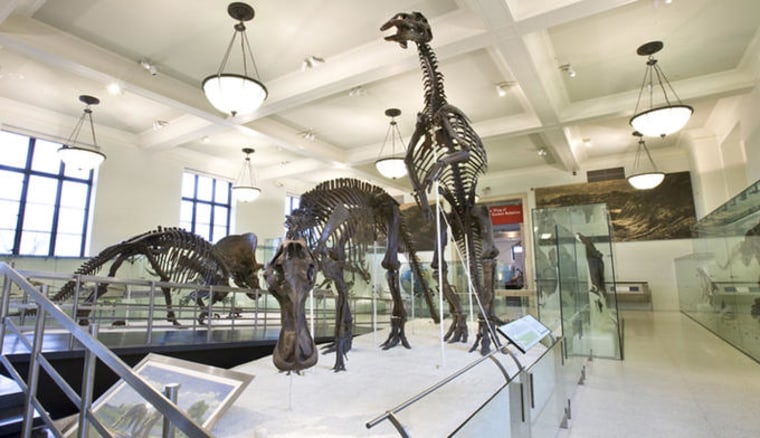Discovering a new species must be a heady experience — the collection in the field, the "eureka" moment when you realize you've got something new, the jubilant announcement to the rest of the scientific community.
Well, not quite.
In fact, an average of 21 years pass from the time a new specimen is discovered until the time it's identified and reported to the world, a new study finds. The individual steps may still be very exciting, but they're often incredibly slow. And at this rate, species may go extinct in the wild while the specimens that might have identified them languish unstudied on museum shelves.
"In the context of the current extinction crisis, it is a matter of documenting what will otherwise never have been known, as species may become extinct even before the scientific community becomes aware of their existence," said study researcher Benoît Fontaine, a diversity researcher at France's Le Muséum national d'Histoire naturelle.
Species shelf life
Working in a museum triggered Fontaine and his colleagues' interest in how long it takes to get a new species on the record. After all, Fontaine told LiveScience, he spends his days surrounded by shelves and drawers full of specimens waiting to be studied. [ 6 Strange Species Discovered in Museums ]
The researchers randomly chose 600 species out of the amazing 16,994 new species described worldwide in 2007 for an estimate of how long specimens wait. In 570 cases, the date of first collection was available. The average, or mean, length between collection and description was 20.7 years.
"We suspected the shelf life was long, but not that long!" Fontaine said.
The length of time varied widely, from almost immediate announcements to a whopping 206 years between discovery and identification. A temple pit viper from the Indonesian island of Sulawesi, Tropidolaemus laticinctus, took the prize for longest time to describe. It's an animal with a complicated taxonomy, Fontaine said, and assigning species is difficult, because differences in the snake's color patterns don't always correlate with its geography or other body shapes, making identification tough.
What takes so long?
Some factors influenced how fast a species got off the shelf and into public knowledge. Plants and vertebrates (organisms with backbones) took longer than other organisms, perhaps because museums have huge backlogs of plants, vertebrates and insects to study, but have relatively fewer fungi and non-insect invertebrates lurking in storage rooms, meaning there is less to sift through.
When a species is part of a recently revised scientific category, it's more likely to get a quick ID, likely because it's easier to describe organisms by modern, rather than archaic, standards. It takes longer to describe species when the main scientist is from a wealthy country, again likely because wealthier countries have more of a backlog of specimens. New species also get described quicker when an amateur, non-scientifically-trained person discovers them.
Part of the problem, Fontaine said, is the vagaries of scientific publishing. About 60 percent of new species get described in books or journals without an impact factor — basically, a score of how influential that publication is and how often other researchers cite it in their journal articles. Only 8 percent of new species get described for the first time in publications with high impact factors. Scientists' own careers can depend on publishing in journals with high impact factors, so they have little incentive to describe new species in little-noticed journals.
A 2011 study in the journal Trends in Ecology and Evolution estimated the price tag for cataloging all the unknown species in the world would be $263.1 billion.
Quicker identification of species would require training more taxonomists and streamlining the methods for describing new species, Fontaine said. Researchers would also need to spend more time outside.
Taxonomists usually need several specimens to positively identify a new species, Fontaine said, so multiple trips to the field are often required.
" Most species are rare, and as a result, a field expedition often produces only one specimen of a given species," Fontaine said.
The researchers will report their results Tuesday in the journal Current Biology.
Follow Stephanie Pappas on Twitter @sipappas or LiveScience . We're also on Facebook and .
